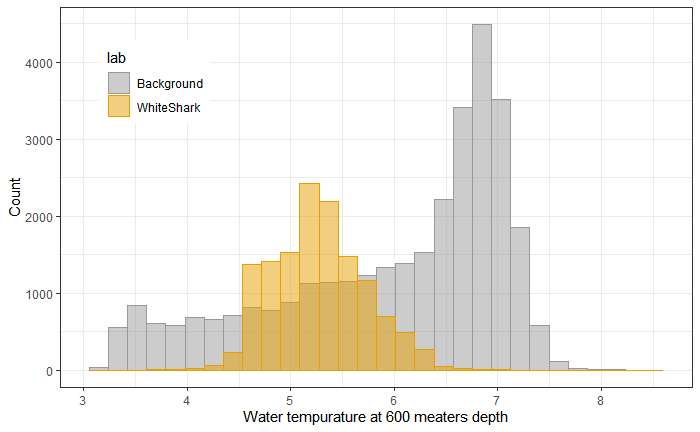The project utilized data from the Tagging of Pacific Predators initiative, which involved the tagging of white sharks over the course of the past decade. This comprehensive dataset comprised over a hundred thousand observations of time and location.
The primary objective of this project was to investigate whether there exists a notable disparity in temperature distribution between the observed locations of white sharks and randomly sampled background points. Furthermore, the aim was to assess the predictive power of temperature in relation to these distributions.
To accomplish this, a script was developed using R. This script facilitated the sampling of temperature data at specified latitude, longitude, and depth for each recorded shark observation, as well as the random sampling of points across the designated area of interest, establishing a background dataset.


Subsequently, a machine learning algorithm known as Maxent (Maximum Entropy Modeling) was employed to analyze the data. The Maxent model aimed to identify any significant depths at which the presence of white sharks displayed a discernible correlation with temperature. The analysis revealed that the temperature at a depth of 600 meters proved to be the most influential single variable in predicting the occurrence and distribution of white sharks.
One notable advantage of utilizing Maxent for this study is its ability to derive meaningful insights from presence-only data, which was particularly relevant given the nature of the dataset available for analysis.